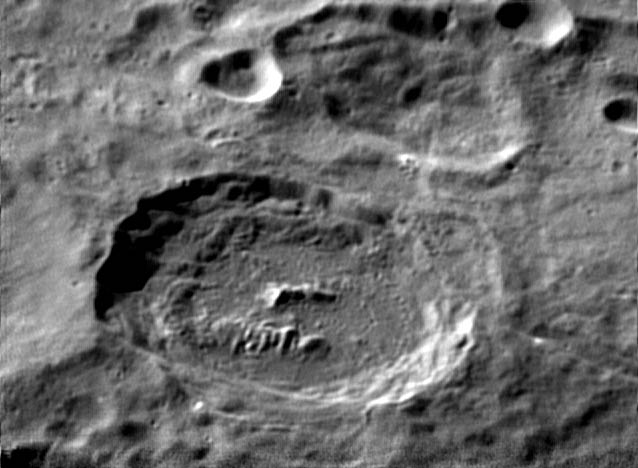Difference between revisions of "April 24, 2005"
| Line 28: | Line 28: | ||
<br>Rukl Plate 68 | <br>Rukl Plate 68 | ||
</p> | </p> | ||
| − | <p | + | <p><b>Yesterday's LPOD:</b> [[April 23, 2005|The Best Lava Flow on the Moon]] </p> |
| + | <p><b>Tomorrow's LPOD:</b> [[April 25, 2005|A Chain of Mystery]] </p> | ||
</tr> | </tr> | ||
</table> | </table> | ||
| Line 55: | Line 56: | ||
===COMMENTS?=== | ===COMMENTS?=== | ||
Register, and click on the <b>Discussion</b> tab at the top of the page. | Register, and click on the <b>Discussion</b> tab at the top of the page. | ||
| + | <hr> | ||
| + | <!-- | ||
| + | You can support LPOD when you buy any book from Amazon thru [[Support_ LPOD|LPOD]]! | ||
| + | --> | ||
| + | <span style="font-size:88%"> | ||
| + | <center> | ||
| + | Contributions to http://www2.lpod.org/ are licensed under a Creative Commons Attribution No-Derivative-Works Non-Commercial 3.0 License. [http://www.creativecommons.org/licenses/by-nc-nd/3.0 http://www.wikispaces.com/i/creativecommons/by-nc-nd_3.0_80x15.png]<br> | ||
| + | </center> | ||
| + | </span> | ||
Revision as of 13:22, 1 February 2015
Fabulous Fab!
Image Credit: Mike Wirths |
|
Fabulous Fab! Have you ever looked carefully at Fabricius? I hadnt until I studied this great image. Usually Fabricius is seen as an obstruction hiding part of the floor of the large crater Janssen, but it is a fascinating crater in its own right. Fabricius (diameter 78 km) is mostly a Tycho-like complex crater, with terraced rim, flat floor and central peak. But the floor contains a horseshoe-like massive ridge. This is does not make Fabricius a floor-fractured crater - their concentric pattern is of rilles. I would guess that the floor arc of Fabricius formed by a terrace sliding down the crater walls. The ridge is completely free of the wall on the NW side, but is adjacent to the SE wall, like a normal terrace. On the southern portion of the floor a small crater occurs in the middle of a short rille, one of the few in a highlands crater. The rim of Fabricius has two abnormalities to notice. On the left (S), an angular scallop suggests that a large rim collapse started but didn't collapse entirely. At the bottom (W) of the crater a thin ridge extends from the rim onto the adjacent highland and then curves back. This looks like another place where a rim scallop subsided only slightly. Compare this image with the Lunar Orbiter IV image - they have essentially the same resolution! Technical Details: Related Links: Yesterday's LPOD: The Best Lava Flow on the Moon Tomorrow's LPOD: A Chain of Mystery |
|
Author & Editor: Technical Consultant: Contact Translator: A service of: |
COMMENTS?
Register, and click on the Discussion tab at the top of the page.
Contributions to http://www2.lpod.org/ are licensed under a Creative Commons Attribution No-Derivative-Works Non-Commercial 3.0 License. 




